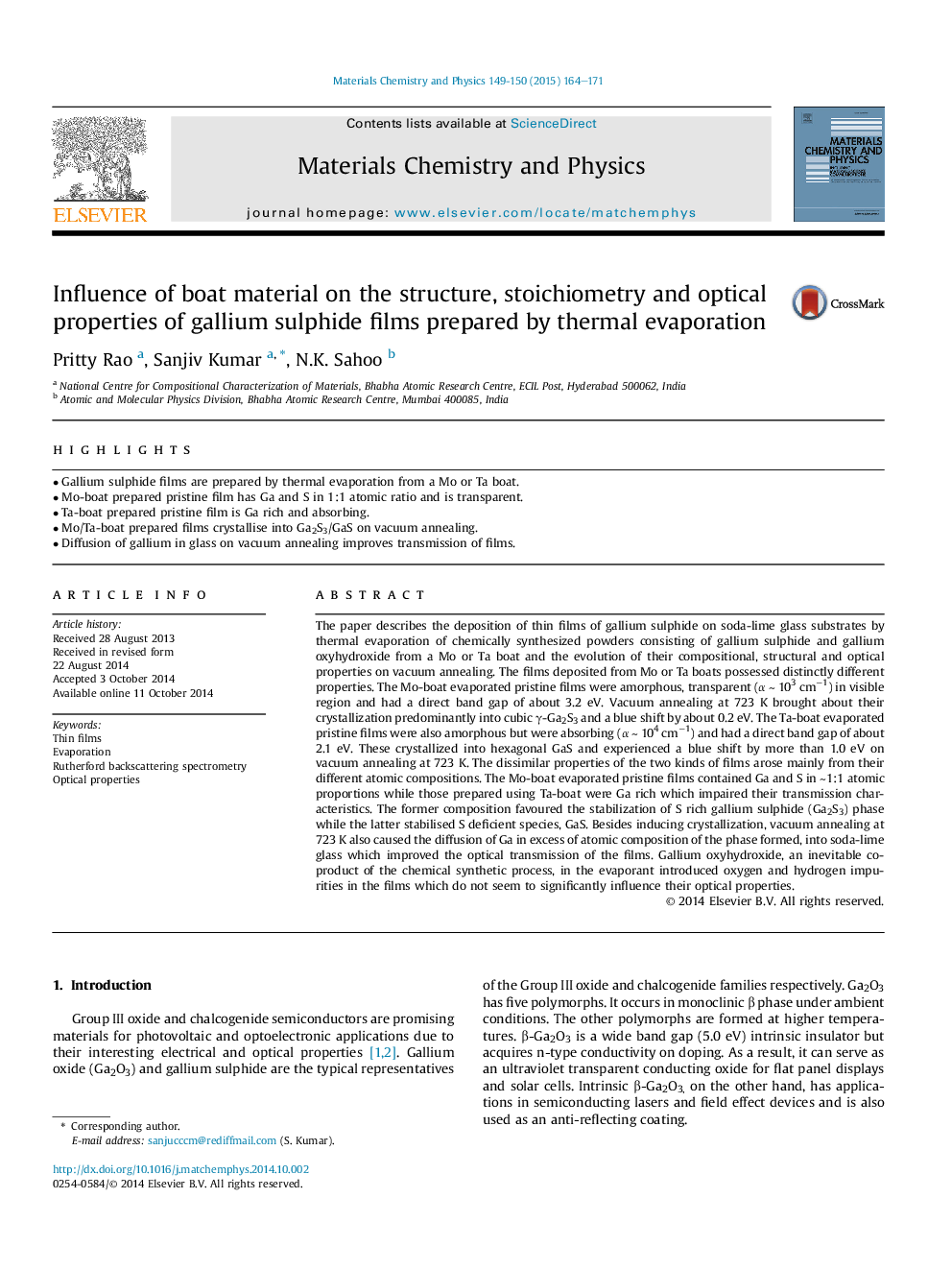| Article ID | Journal | Published Year | Pages | File Type |
|---|---|---|---|---|
| 1521400 | Materials Chemistry and Physics | 2015 | 8 Pages |
•Gallium sulphide films are prepared by thermal evaporation from a Mo or Ta boat.•Mo-boat prepared pristine film has Ga and S in 1:1 atomic ratio and is transparent.•Ta-boat prepared pristine film is Ga rich and absorbing.•Mo/Ta-boat prepared films crystallise into Ga2S3/GaS on vacuum annealing.•Diffusion of gallium in glass on vacuum annealing improves transmission of films.
The paper describes the deposition of thin films of gallium sulphide on soda-lime glass substrates by thermal evaporation of chemically synthesized powders consisting of gallium sulphide and gallium oxyhydroxide from a Mo or Ta boat and the evolution of their compositional, structural and optical properties on vacuum annealing. The films deposited from Mo or Ta boats possessed distinctly different properties. The Mo-boat evaporated pristine films were amorphous, transparent (α ∼ 103 cm−1) in visible region and had a direct band gap of about 3.2 eV. Vacuum annealing at 723 K brought about their crystallization predominantly into cubic γ-Ga2S3 and a blue shift by about 0.2 eV. The Ta-boat evaporated pristine films were also amorphous but were absorbing (α ∼ 104 cm−1) and had a direct band gap of about 2.1 eV. These crystallized into hexagonal GaS and experienced a blue shift by more than 1.0 eV on vacuum annealing at 723 K. The dissimilar properties of the two kinds of films arose mainly from their different atomic compositions. The Mo-boat evaporated pristine films contained Ga and S in ∼1:1 atomic proportions while those prepared using Ta-boat were Ga rich which impaired their transmission characteristics. The former composition favoured the stabilization of S rich gallium sulphide (Ga2S3) phase while the latter stabilised S deficient species, GaS. Besides inducing crystallization, vacuum annealing at 723 K also caused the diffusion of Ga in excess of atomic composition of the phase formed, into soda-lime glass which improved the optical transmission of the films. Gallium oxyhydroxide, an inevitable co-product of the chemical synthetic process, in the evaporant introduced oxygen and hydrogen impurities in the films which do not seem to significantly influence their optical properties.
